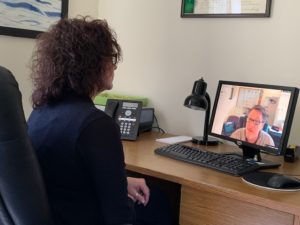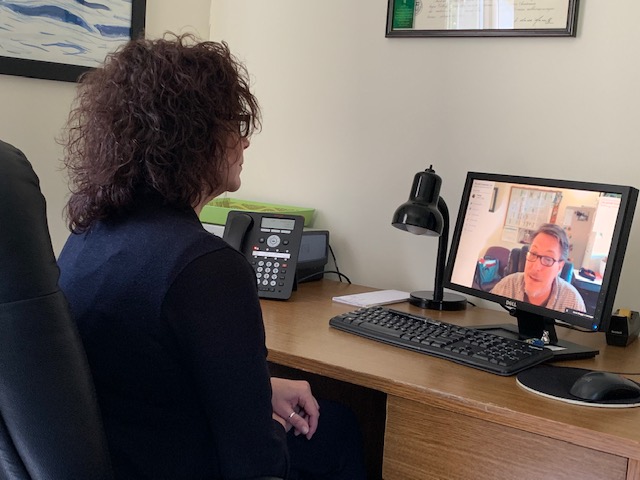 As Riverside strives to continue delivering innovative, high-quality services while moving into the still-uncertain future of the Coronavirus pandemic, we recently conducted a survey to formally measure the effectiveness of telehealth on behavioral health services.
As Riverside strives to continue delivering innovative, high-quality services while moving into the still-uncertain future of the Coronavirus pandemic, we recently conducted a survey to formally measure the effectiveness of telehealth on behavioral health services.
Like most health providers, Riverside had to quickly pivot, providing almost all outpatient care via telehealth beginning in March 2020. Several years ago, we completed a telehealth pilot, and in 2019 we began offering telehealth services at our Outpatient Centers. This gave us a significant head start and a strong foundation to build upon, allowing Riverside to make the transition to virtual care across all of our centers almost overnight.
After three months of delivering outpatient care primarily virtually, we carefully developed questionnaires for both clients and clinicians in order to collect data and analyze key access and quality measures of virtual behavioral healthcare. We’re happy to report that the results are enlightening and highly encouraging – and point the way toward increased access and effectiveness in mental health and addiction services.
With 815 clients and clinicians reporting across our five Riverside Outpatient Centers, we were very pleased to find that both comfort level with telehealth and satisfaction with services were over 90% – a rousing endorsement. And interestingly, although audio-only service by phone might appear to be the default method only when a computer or smartphone isn’t available, we found that it is actually preferred by a certain segment of clients, and that they perceive no difference in quality of care.
A few comments from clients serve to sum up telehealth benefits overall:
“…my disabilities made it impossible for me to make it into the office on some days, even before the pandemic. Telehealth has allowed me to access the essential help I have needed and I’m deeply grateful for it.”
“Telehealth has allowed me to maintain my recovery and address issues which have come up and obtain the care that I have needed. It has been also very instrumental for the isolation the COVID shutdowns caused.”
“I’ve been able to meet with my therapist far more often via telehealth, as sometimes transportation has been an issue…I’m getting to spend more time with my therapist, which naturally is better.”
While the results vary among age groups (adults are more easily engaged in online behavioral healthcare than children) and category of treatment (substance use proved particularly well-served with the consistency of telehealth access), we are now able to take these findings and fine-tune our approach to serving all of our clients via the different connection methods available to us and to them.
Armed with data, we now intend to:
- Pursue funding so clients with audio/video technology needs can access telehealth
- Advocate for funding audio-only telehealth services for clients who prefer it
- Develop telehealth best practices for clinicians who treat client populations with more nuanced virtual treatment needs
Heartened by our initial experiences, we plan to retain, enhance, and extend telehealth services beyond the (hopefully soon) end of the pandemic period!
